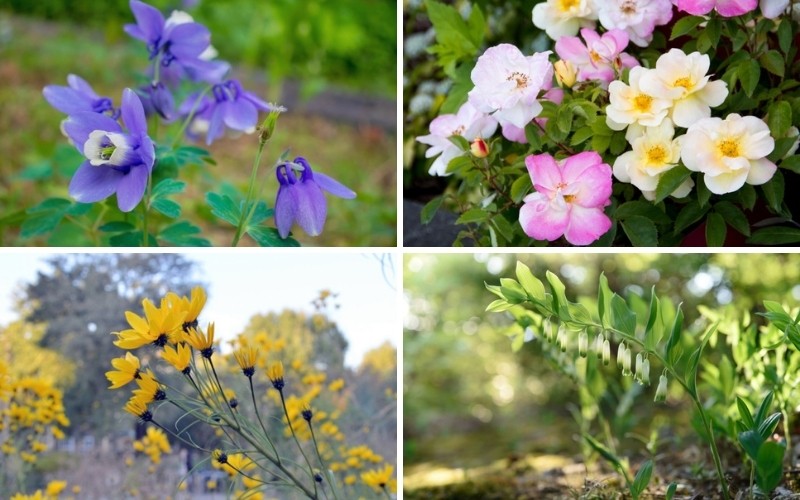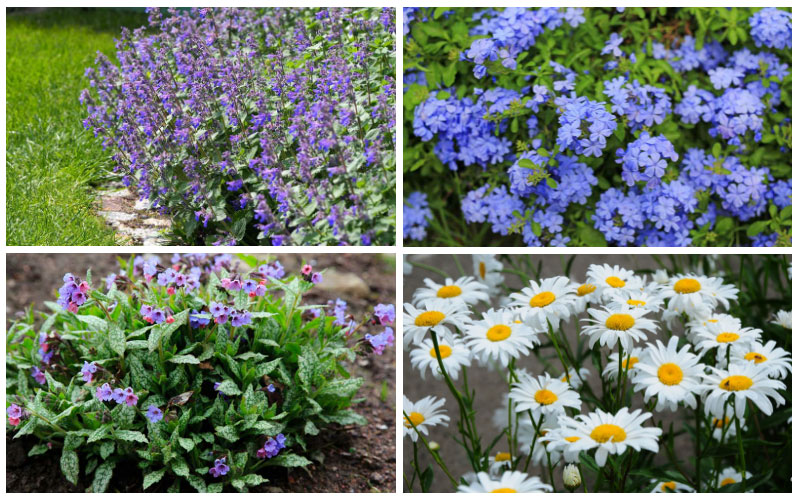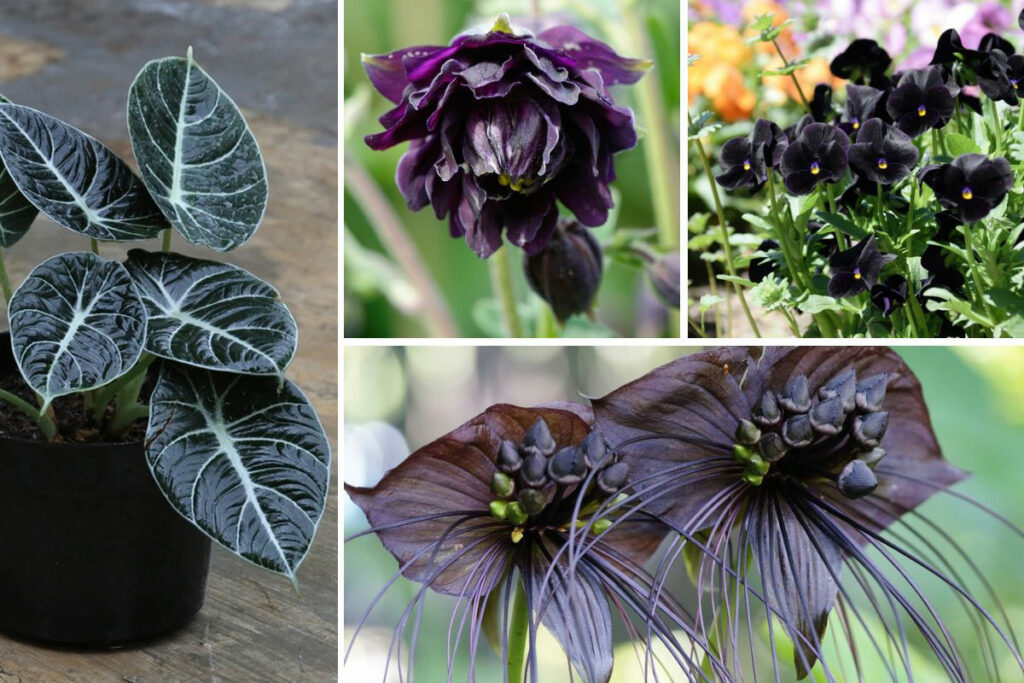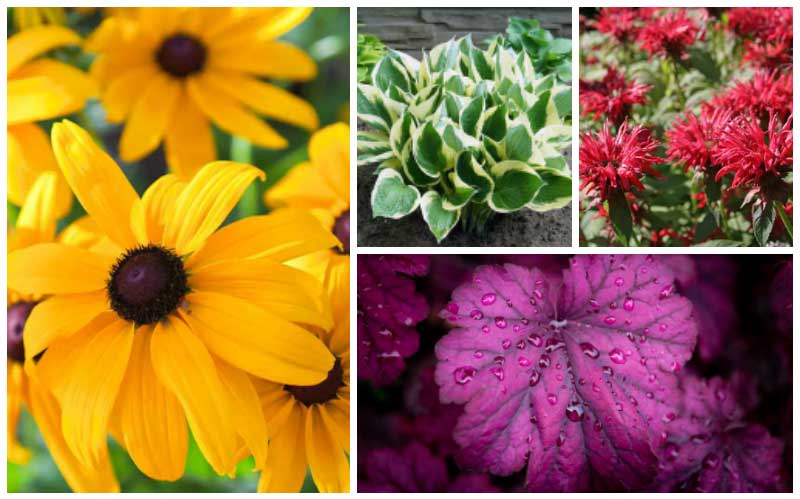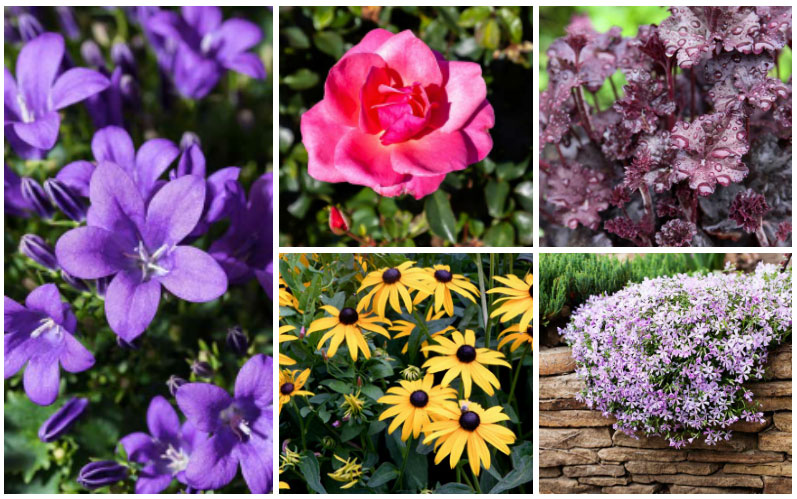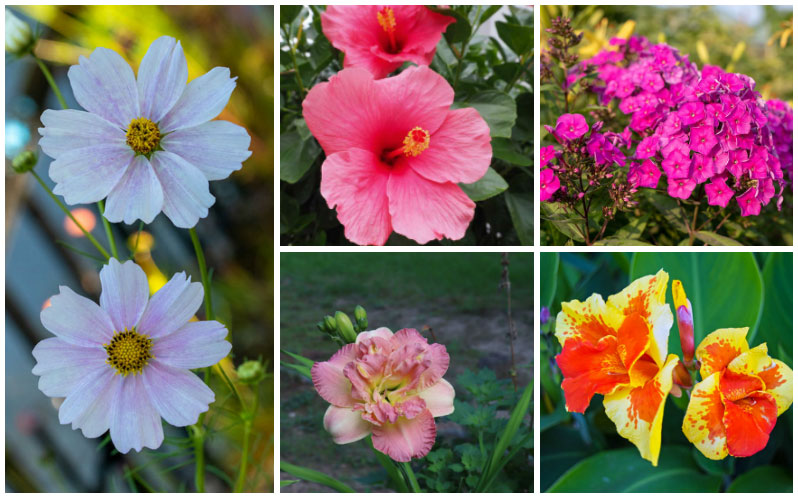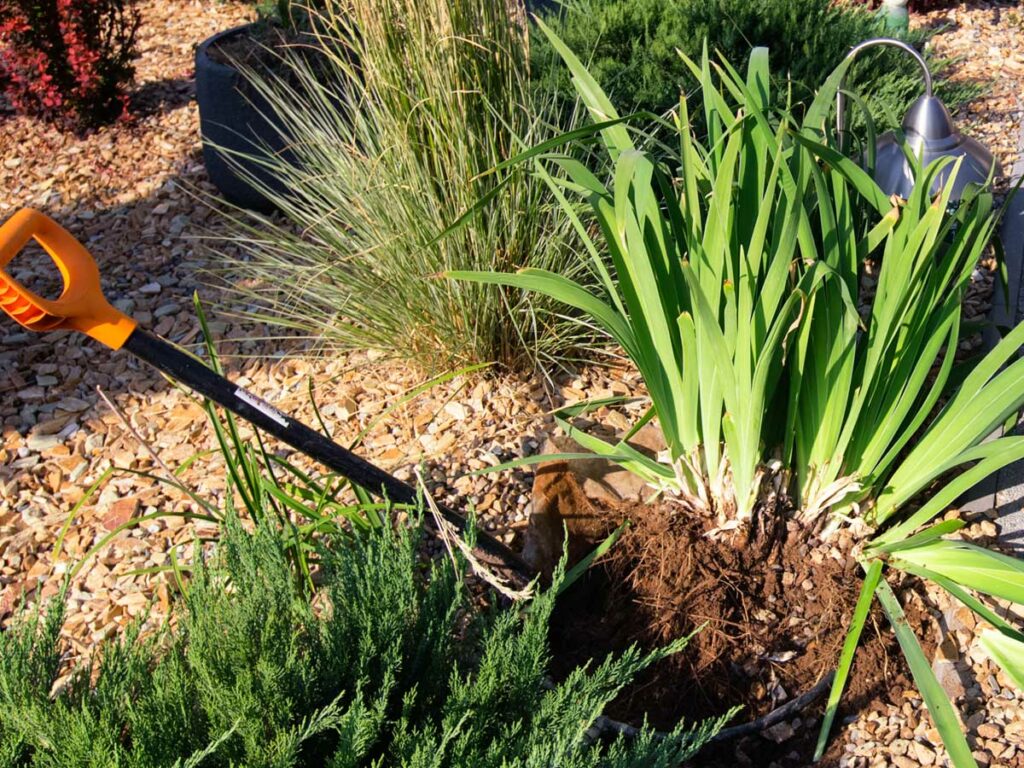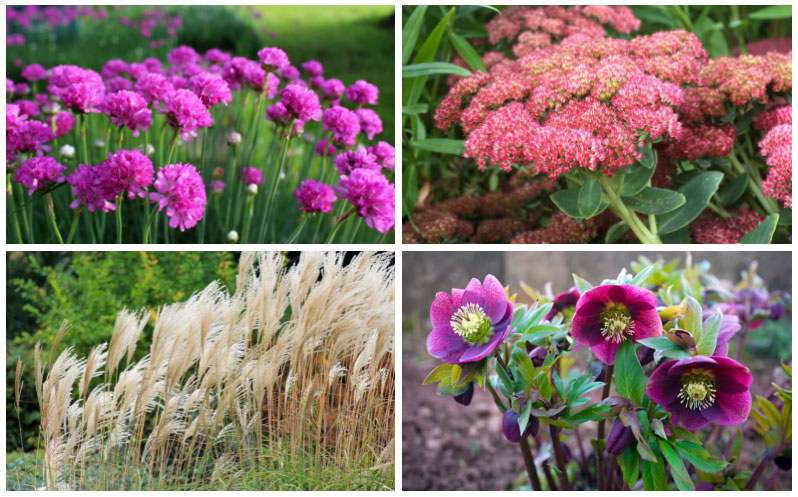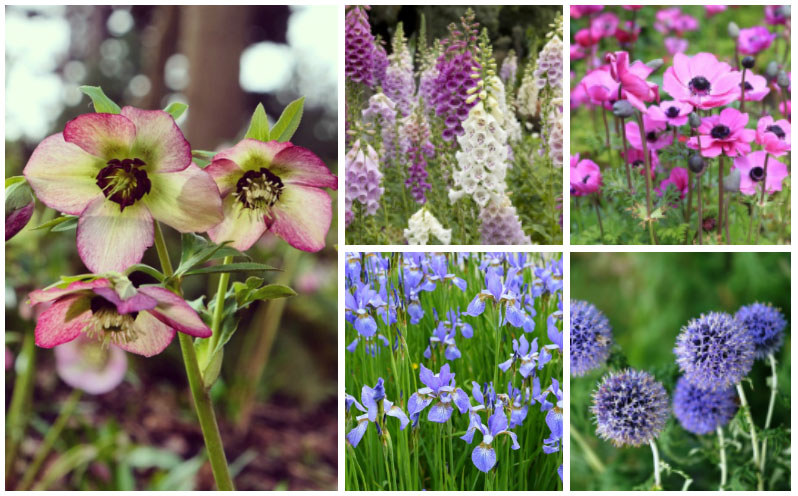The state of Illinois encompasses USDA plant hardiness zones 5a to 7a making it an ideal area for growing vigorous perennial beds that bring bright color to the landscape in the summer.
While some perennials that thrive in planting zone 7a may have difficulty surviving the winter in zone 5a, there are many perennials that will thrive in the state of Illinois.
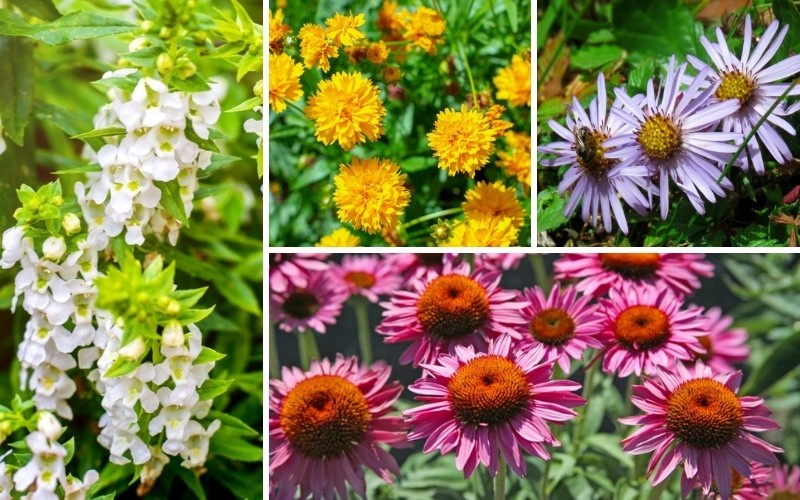
Consider these hardy perennials for your Illinois perennial bed.
Hostas (Hosta spp.)
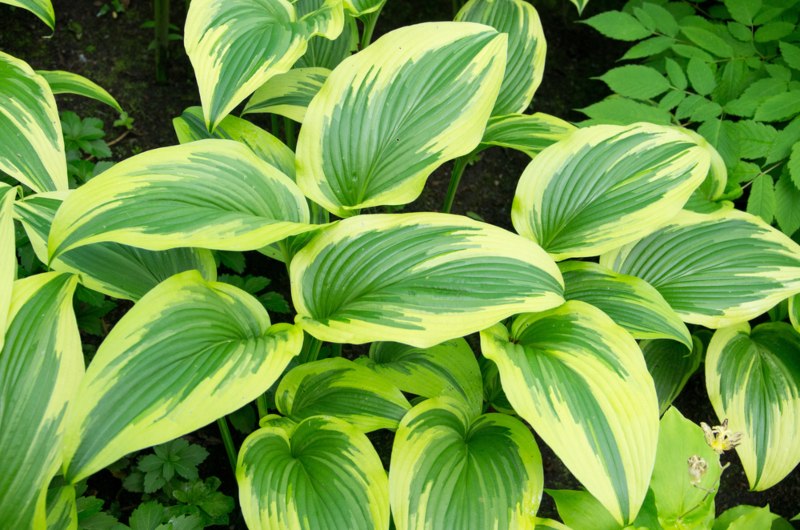
Hostas are prised for their attractive foliage and mounding growth habit. These impressive plants range in color from deep green and blue-green to dazzling white and yellow variegated varieties. Likewise, hostas range in size from 12 to 18 inches to monster plants of heights of 5 feet. Hostas prefer partial shade but will grow in full sun if they have some afternoon shade. They prefer average, well drained soil. Hostas are hardy in USDA plant hardiness zones 3 through 9, depending on the cultivar.
Hardy Hibiscus (Hibiscus spp.)
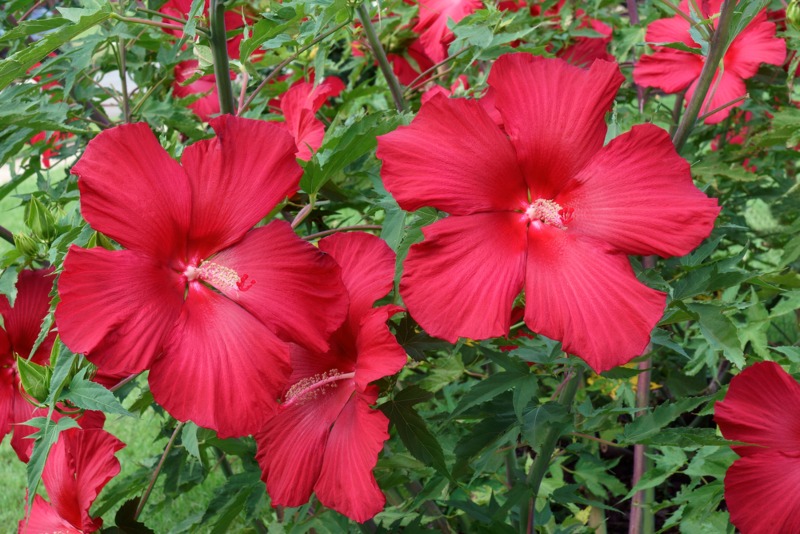
Many associate hibiscus flowers with tropical or subtropical gardens, but these herbaceous perennials can be grown successfully in an Illinois perennial bed. They produce showy, papery blooms in shades of white, pink and red and bloom by mid-summer. Hardy hibiscus plants die back in the fall, but reach heights of 3 to 5 feet in the summer. Blooms may reach a size of 10 inches in diameter creating a profusion of color in the flowerbed. Hibiscus prefers full to partial sun and average, well-drained soil. Hardy Hibiscus are hardy in USDA plant hardiness zones 4 through 9, depending on the cultivar.
Salvia (Salvia spp.)

Salvia is an eye-catching plant that produces a mass of upright stems lined with delicate flowers that range in color from white to deep purple with some hybrids available in amazing hues of pink and blue. This flower blooms in early to midsummer and will continue to bloom into the fall if you are meticulous with deadheading the old blooms. Most grow to heights of 2 to 4 feet and prefer full or partial sun. They grow well in average, well-drained soil and are hardy in USDA plant hardiness zones 5 through 10.
Daylilies (Hererocallis spp.)
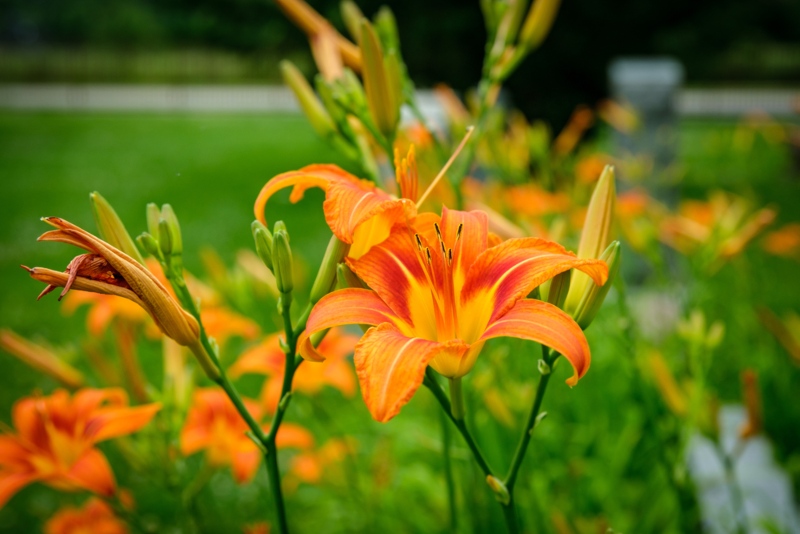
Daylilies bring bright color to the perennial bed with their bold, trumpet-shaped blooms that range in color from traditional yellow and orange to red, pink and salmon with some multi-colored varieties, too. Daylilies bloom for several weeks, but you can extend the blooming time by planting early, mid and late-season bloomers in the flowerbed. Daylies prefer full to partial sun and grow well in average, well-drained soil. They are hardy in USDA plant hardiness zones 4 through 9.
Peonies (Paeonia spp.)
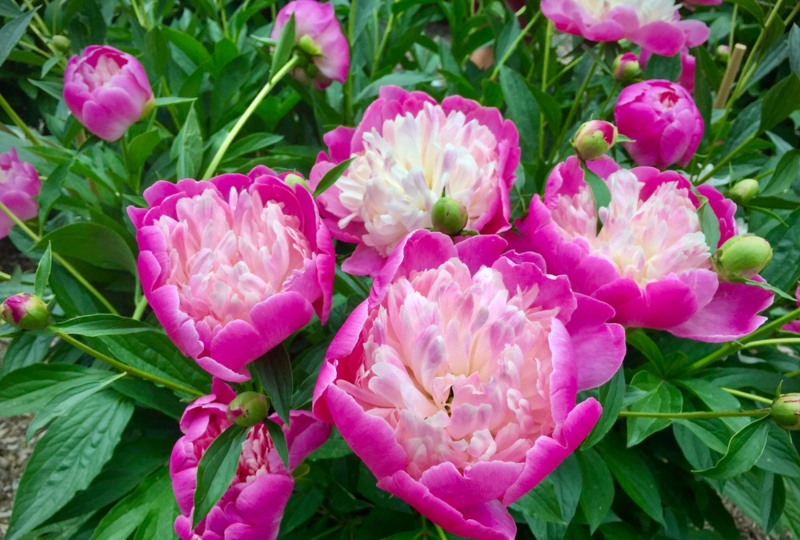
Peonies are a delightful spring flower that bridges the gap between early spring bulbs and summer flowers. They bloom in late spring to early summer producing masses of color with their heady blooms. They range in color from white and pink to deep reds and pinks and many bicolors, too.They can be either single or double petaled and may have a distinct yellow eye. Peonies grow to heights of 2 to 4 feet and will droop in the rain if they are not supported with heavy plant stakes. They prefer full sun or partial shade and grow well in average, well-drained soil. Peonies are hardy in USDA plant hardiness zones 3 through 8.
Coreopsis (Coreopsis spp.)
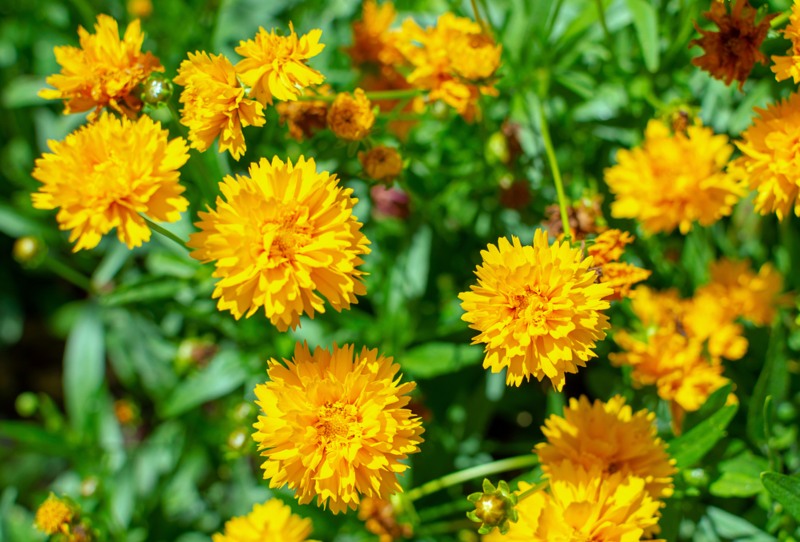
Coreopsis is a care-free perennial that blooms freely for months as long as it is deadheaded. This flower produces a profusion of daisy-like flowers that range in color from yellow and orange to white, pink and red, depending on the cultivar. They reach heights of 18 inches to 4 feet. Coreopsis prefers full sun and sandy or loamy well-drained soil. It is hardy in USDA plant hardiness zones 3 through 10.
Russian Sage (Perovskia atriplicifolia)
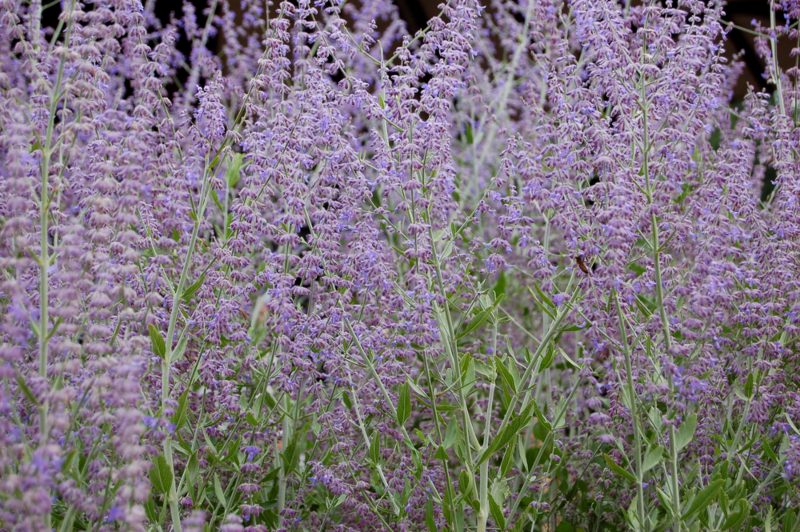
Russian sage adds delicate color and airy foliage to the flowerbed from early to midsummer through the fall. This plant looks a lot like lavender with its gray-green foliage and tiny purple-blue blooms. It forms upright, slightly arching stems lined with tiny flowers that attract bees and butterflies to the garden. It prefers full sun in average, well-drained soil. Russian sage grows slowly for the first year or two, but it forms a bigger clump each year. It grows to heights of 3 to 4 feet and is hardy in USDA plant hardiness zones 4 through 9.
Coneflowers (Echinacea spp.)
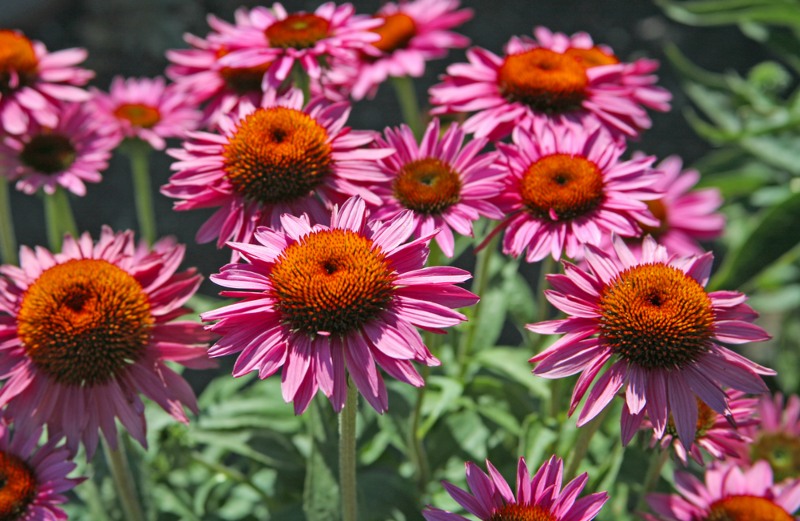
Coneflowers are the mainstay of perennial beds across America and it is no wonder. These hardy plants produce large, showy blooms from early summer until fall, attracting bees and butterflies to the garden. Colors range from traditional purple to lovely shades of pink, yellow, bronze with some bicolor varieties, too. All feature re-flexed flower petals that reveal a contrasting cone in the center. They grow to heights of 2 to 3 feet and prefer full sun and average well-drained soil. Coneflowers are hardy in USDA plant hardiness zones 3 through 9.
Aromatic Aster (Symphyotrichum oblongifolius)
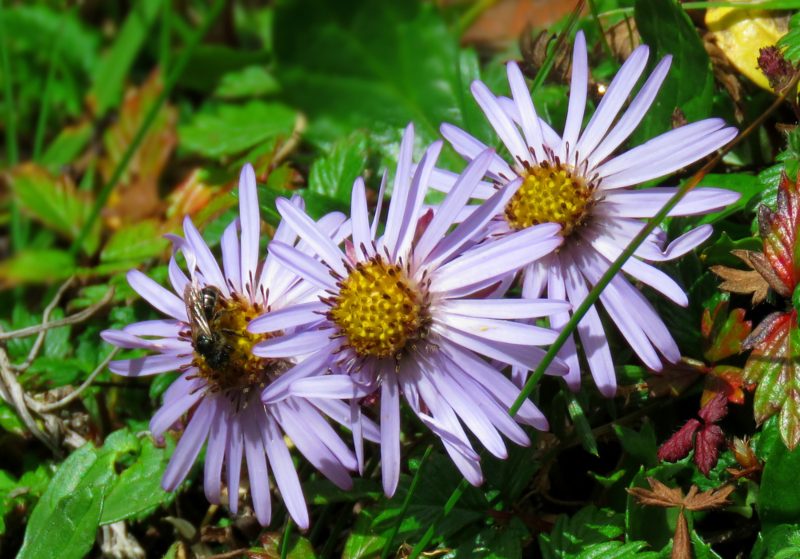
This fragrant aster brings the landscape alive in late summer and fall with its tiny daisy-like flowers of blue or purple. It attracts bees and butterflies creating both color and movement in the flowerbed. Aromatic asters grow to heights of 1 to 3 feet and benefit from some pinching early in the year to create compact dense foliage and prevent toppling when they are mature. It prefers full sun and will tolerate poor and dry soil. It is hardy in USDA plant hardiness zones 3 through 8.
Bluestar (Amsonia tabernaemontana)
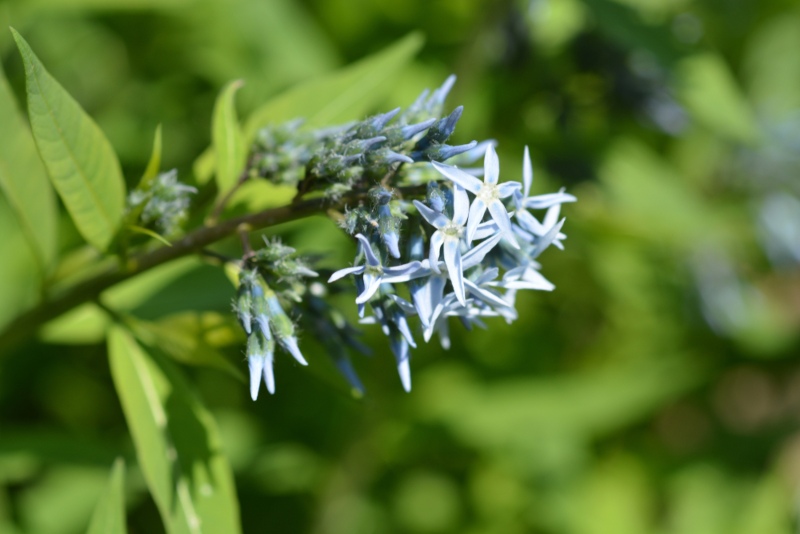
For delicate color in the spring and attractive foliage to form a backdrop in the perennial bed is on your list of perennials to plant, Bluestar may fit the bill. This plant produces clusters of tiny star-shaped, blue flowers on stiff upright stems held above lacy, green foliage. It blooms in early spring and grows to heights of 2 to 3 feet. It prefers full sun to partial shade and will grow in average soil, but prefers evenly-moist, loamy soil. Cutting it back by a third after blooming will produce a new flush of blooms and create dense foliage. It is hardy in USDA plant hardiness zones 3 through 9.
Conclusion
Planting a perennial bed is a great way to bring reliable blooms to your yard, but keep in mind that hardiness and growing preferences can vary among cultivars of the same flower. When planning always check the plant identification label of the variety you are choosing and match the hardiness zone and light requirements to your location.





